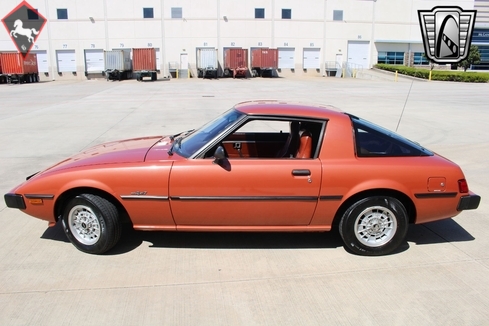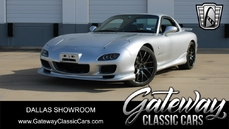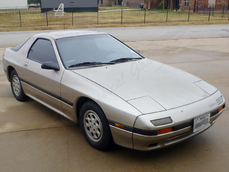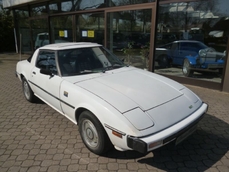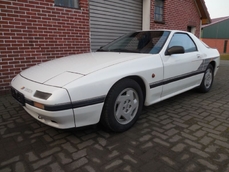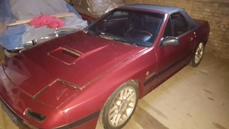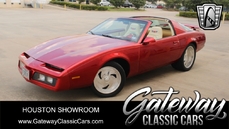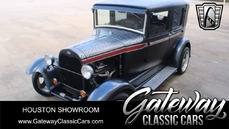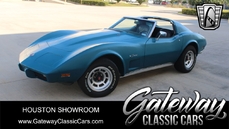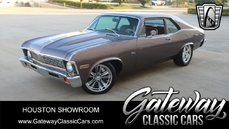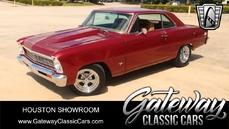Mazda RX-7 1.1L Wankel Engine 1979
General description :
Mileage : 54476
Interior Color : Brown
Exterior Color : Sonic Bronze
VIN : SA22C507779
Transmission Description : Automatic
Doors : 2
Description : Gateway Classic Cars Houston Showroom is excited to offer this very nice Sonic Bronze 1979 Mazda RX-7. Since auto writer Don Sherman provides such an appropriate period synopsis of the first RX-7s, in an article he penned about his own '79 RX-7 experience in September 2010 for MotorTrend magazine, we'll quote it directly: "Mazda's timing was perfect. In the late 1970s, British and Italian sports car makers were hanging by their fingernails, C3 Corvettes were aging ungracefully, Datsun's lovable Z-Car was evolving into the foppish 280ZX, and Porsche's 924 suffered from a hodgepodge of Volkswagen and Audi components. So, the Mazda RX-7 that arrived in the spring of 1978 (as an early '79 model) was the answer to unspoken sports car dreams: it was attractive, fun to drive, and -- with a sticker as low as $6395 -- bargain priced. As a bonus, the RX-7 was powered by a rotary engine, which at the time was only one step down from a turbine as a source of wonder and amazement."
We couldn't agree more with what Don said! This RX-7 is also somewhat of a rare bird: the Sonic Bronze color was only available in the RX-7's first year (1979), and the matching plaid-trimmed cloth seats were also a relative rarity in the early RX-7's, because most came with vinyl seats with no cloth inserts. According to its current owner, this one was produced in May 1978, and was the 7779th RX-7 built for the U.S. market, based on documentation he has on the car. Other indicators that this is a very early 1st gen RX-7 include the driver's side-only side view mirror (later 1st year RX-7s were shipped with two side view mirrors as standard equipment); the Japanese "tuning on the left, volume on the right" radio controls layout [the Japanese logic was that drivers were more prone to changing radio stations, vs. making volume adjustments, so they put the tuning knob closest to the driver; but later cars adopted the more common (in the U.S.) "volume on the left/tuning on the right" radio control layout]; and the fact that the hood support stanchion is on the right side (rather than on the left, as found in later production cars). This is a nicely preserved very early first production year example of the car that saved the Wankel rotary engine (for a while) at Mazda. It appears to have been left pretty much intact since it was first sold in the U.S., with a 1.1L rotary engine under the hood, 3-speed automatic transmission, Aluminum Wheels, AM/FM/Cassette audio system, Power Brakes, Radial Tires, and Seatbelts. About the only changes to it are that the radiator has been replaced, and the Air Conditioning has been converted to R134a (however, it is not blowing cold). If you collect RX-7s, you'll want this one. If you're looking for a classic, entry-level sports car, it's a great way to start! Call or email our Houston showroom - we'd love to help you snap this one up!
https://www.gatewayclassiccars.com/vehicle/HOU/2335/1979-Mazda-RX7
1979 Mazda RX-7 1.1L Wankel Engine is listed sold on ClassicDigest in Houston by Gateway Classic Cars for $16500.
Car Facts
Car type : Car Make : Mazda Model : RX-7 Model Version : 1.1L Wankel Engine Engine size : 1.1 Model Year : 1979 Location : Houston
Sold
Seller Information
Sold
People who viewed this Mazda RX-7 also viewed similar Mazda listed at ClassicDigest
Other cars listed for sale by this dealer
About Mazda
Mazda is indeed a unique Japanese automaker known for its innovative engineering, including the use of Wankel rotary engines. Here's a brief overview of Mazda's history along with ten of its most important historic models:1. Mazda R360 (1960):
Mazda's first passenger car, a compact microcar designed to meet the demand for small, affordable vehicles in post-war Japan.
2. Mazda Cosmo (1967):
An iconic sports car and Mazda's first production car with a twin-rotor Wankel rotary engine, showcasing the company's commitment to innovative technology.
3. Mazda Familia/323 (1963–1977):
The Familia, also known as the 323 in later years, was a compact car that played a crucial role in establishing Mazda's presence in the global automotive market.
4. Mazda Luce/RX-4 (1966–1978):
The Luce, sold as the RX-4 in certain markets, was a midsize luxury car featuring a rotary engine. It contributed to Mazda's image as a maker of stylish and technologically advanced vehicles.
5. Mazda R100 (1968–1972):
A small, lightweight coupe that helped popularize the Wankel rotary engine. It was part of Mazda's R-series of rotary-powered cars.
6. Mazda RX-2 (1970–1978):
The RX-2, part of Mazda's R100 series, was a compact car with a rotary engine. It gained recognition for its performance in motorsports.
7. Mazda RX-3 (1971–1978):
The RX-3 was a compact car available in various body styles, including a coupe and sedan. It was successful in motorsports, contributing to Mazda's reputation for performance.
8. Mazda RX-7 (1978–2002):
The first-generation RX-7, introduced in the late 1970s, was a groundbreaking sports car with a rotary engine. It became an iconic model for Mazda.
9. Mazda 808 (1971–1977):
The Mazda 808, also known as the Mazda 818 in some markets, was a compact car that contributed to Mazda's success in the small car segment.
10. Mazda Capella/RX-5 (1970–1978):
The Capella, sold as the RX-5 with a rotary engine, was a midsize car that showcased Mazda's commitment to innovation and performance.
These models from the 1960s and 1970s highlight Mazda's early exploration of rotary engine technology and its efforts to establish a presence in various segments of the automotive market.
